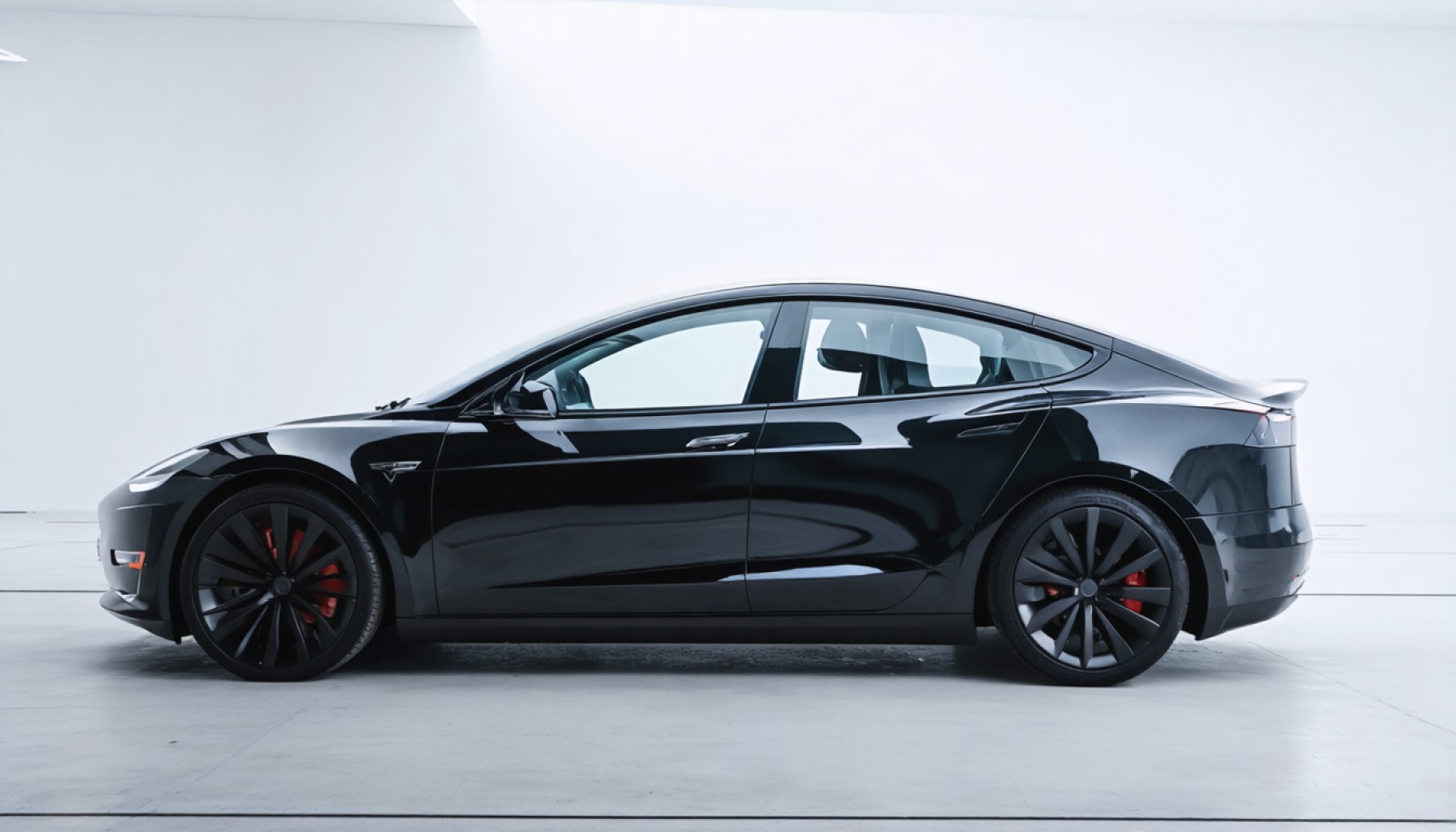- Tesla’s vehicle deliveries in Q1 2025 dropped 13% compared to last year, reaching 336,000 and missing investor expectations.
- CEO Elon Musk’s involvement in President Trump’s administration sparked political controversy, impacting Tesla’s brand and market dynamics.
- In Europe, Tesla’s market share fell significantly, with a drop from 17.9% to 9.3%, notably in Germany.
- In China, Tesla faces strong competition, with sales declining by 11.5% in March.
- Tesla’s stock plunged 36% in Q1, erasing $460 billion in market capitalization due to market uncertainties.
- Despite challenges, the upcoming redesigned Model Y is expected to boost Tesla’s fortunes.
- The situation underscores the impact of political and public dynamics on Tesla’s success, necessitating strategic recalibration.
In the world of electric vehicles, Tesla remains a symbol of innovation and ambition. But even the mightiest of symbols can falter. The first quarter of 2025 proved to be a rocky road for the company, with Tesla’s vehicle deliveries slipping to 336,000—a stark 13% drop from the same period last year. Investors, who were anticipating numbers between 360,000 and 370,000, experienced a jolt as reality unfolded beneath projections provided by both Tesla’s team and prediction market analysts.
Amidst the hum and whir of Tesla’s factories, where 362,615 vehicles awaited eager buyers, the outside world was becoming a cacophony of unrest. CEO Elon Musk found himself at the center of political tempests. His divisive role in President Donald Trump’s administration as head of the Department of Government Efficiency (aptly acronymed DOGE) fueled protests and boycotts. Indeed, the fallout was not just political—it bled into Tesla’s fortunes, impacting consumer sentiment and market dynamics.
As Musk sought to trim government expenditures and regulations like those withering leaves of autumn, his political ventures spilled across the Atlantic. In Europe, once a bastion of growth, Tesla’s market share crumbled. The numbers told a somber tale: from a towering 17.9% share in the first quarter of last year to a diminished 9.3% in 2025. Germany, a critical market, reflected these challenges most acutely, with Tesla’s share of battery electric vehicles plunging to 4% from its former 16%.
Over in Asia, the story was no less complicated. In China—home to fierce competitors like BYD—Tesla’s sales dipped by 11.5% year-on-year to 78,828 in March, showcasing the growing challenge of retaining dominance in electric vehicle popularity amidst burgeoning local competitors.
The stock market mirrored the turmoil. Tesla’s shares plummeted by 36% in the first quarter—a striking downturn not seen since 2022. This nosedive erased $460 billion in market capitalization, further reflecting investor skittishness tied to Tesla’s multifaceted challenges.
Yet, amidst the chaos, Tesla continues to charge forward with resilience. The anticipation surrounding their redesigned Model Y, presumed to be a bestseller according to Musk, whispers of a potential rebound. The lure of technological advancement remains a potent driving force behind Tesla’s narrative.
The takeaway is clear: in a world where innovation collides with public perception and political entanglement, even giants can be tripped by their circumstances. As Tesla navigates these convoluted waters, the road ahead demands both a recalibration of strategy and an unwavering resolve to thrive amidst turbulence.
Can Tesla Overcome Its 2025 Challenges and Retain Its Electric Vehicle Crown?
Understanding Tesla’s First Quarter 2025 Performance
Tesla’s rocky start to 2025 with a 13% decline in vehicle deliveries underscores the complexities facing this electric vehicle (EV) behemoth. Despite producing 362,615 vehicles, it delivered only 336,000, leaving inventories high and investors concerned. The challenges Tesla faces aren’t just limited to production and delivery but are entrenched in geopolitical entanglements and formidable market competition.
Key Factors Affecting Tesla’s Market Dynamics
1. Political Controversies
Elon Musk’s involvement as head of the Department of Government Efficiency (DOGE) in the Trump administration has polarized public opinion. Consumer boycotts and protests attributed to Musk’s political role have tarnished Tesla’s brand image, affecting its sales and stock performance.
2. European Market Decline
In Europe, where Tesla once held a commanding 17.9% market share, a drop to 9.3% reflects growing competition and consumer sentiment shifts. The dip in Germany, a pivotal market, from a 16% to a 4% share indicates the depths of Tesla’s European struggle.
3. Competition in Asia
The Chinese market, where local players like BYD are rising, saw an 11.5% drop in Tesla’s year-on-year sales. Tesla’s challenge in retaining its foothold in this key region is a reminder of the fierce global competition in the EV sector.
4. Stock Market Impact
Tesla’s shares plunged by 36% in Q1 2025, wiping $460 billion from its market cap. Investor confidence is shaky, reflected in this significant valuation loss.
Can Technological Advancement Drive Tesla’s Recovery?
The anticipation around the redesigned Model Y highlights Tesla’s hope for a turnaround. Musk’s confidence in this model as a future bestseller demonstrates Tesla’s reliance on innovation to reinvigorate consumer interest and market presence.
Future Predictions and Recommendations
Market Forecasts & Industry Trends
1. Electric Vehicle Adoption and Innovation: Growing environmental concerns and government incentives are fueling the global adoption of EVs. Tesla’s technological edge can capitalize on this trend if it successfully implements innovations.
2. Diversification of Market Strategy: Geopolitical factors demand a resilient strategy. For Tesla, this might mean diversifying manufacturing locations and supply chains, especially in unstable regions.
Quick Tips for Tesla’s Navigational Strategy
– Addressing Political Concerns: A deliberate distancing or clarification of Musk’s political roles may alleviate consumer apprehension.
– Invest in Localized Manufacturing: To counteract competition, Tesla should consider increasing its manufacturing footprint closer to key markets like Europe and Asia.
– Innovation and Consumer Engagement: Beyond the Model Y, ongoing advancements and open consumer communication can help rebuild brand loyalty.
For more insights on Tesla’s innovations and market positioning, explore their [official website](https://www.tesla.com).
Conclusion
Tesla’s tumultuous 2025 illustrates the intricate balance of innovation, market dynamics, and public perception. As Tesla endeavors to regain its footing, the company’s steadfast dedication to cutting-edge technology and strategic realignment will likely define its path forward.







